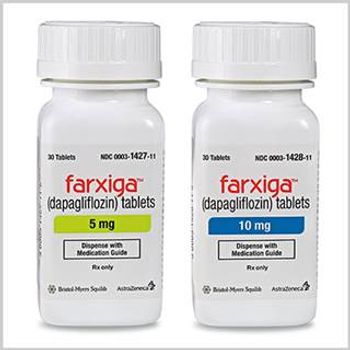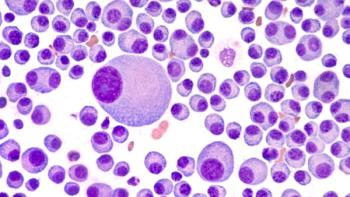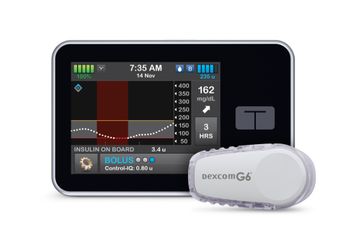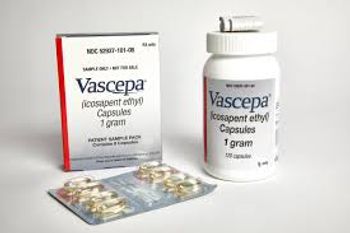
A pair of interviews on investigational therapies whose sponsors reported updates at the 61st American Society of Hematology Annual Meeting and Exposition: UCART19 from Servier and a revamped anti-BCMA therapy ide-cel from bluebird bio.
Mary Caffrey is the Executive Editor for The American Journal of Managed Care® (AJMC®). She joined AJMC® in 2013 and is the primary staff editor for Evidence-Based Oncology, the multistakeholder publication that reaches 22,000+ oncology providers, policy makers and formulary decision makers. She is also part of the team that oversees speaker recruitment and panel preparations for AJMC®'s premier annual oncology meeting, Patient-Centered Oncology Care®. For more than a decade, Mary has covered ASCO, ASH, ACC and other leading scientific meetings for AJMC readers.
Mary has a BA in communications and philosophy from Loyola University New Orleans. You can connect with Mary on LinkedIn.

A pair of interviews on investigational therapies whose sponsors reported updates at the 61st American Society of Hematology Annual Meeting and Exposition: UCART19 from Servier and a revamped anti-BCMA therapy ide-cel from bluebird bio.

Coverage from the 61st American Society of Hematology Annual Meeting and Exposition in Orlando, Florida, featured results for allogeneic or "off the shelf" CAR T-cell treatments and bispecific antibodies.

As part of our anniversary celebration, today we launch “Paper of the Week,” which will look back at some of the most influential research articles and commentary that have appeared in The American Journal of Managed Care® over the past 25 years, and why they are important today.

While the number of survivors who had cardiotoxic treatments increased, the doses they received decreased. Radiation exposure fell from 77% in the 1970s to 40% in the 1990s.

US Census data show the segment of the population over age 65 is growing faster than the group under age 65, highlighting the need for new healthcare delivery solutions.

The authors calculate that Medicaid expansion saved up to 8100 lives between 2014 and 2016, as the Affordable Care Act (ACA) took full effect.

Priority review was based on phase 3 results from DAPA-HF, presented in Paris at the European Society of Cardiology and published in the New England Journal of Medicine.

Caris Life Sciences, a leader in somatic testing on cancer tumor cells, has joined forces with Ambry Genetics to offer its 67-gene test that evaluates a patient’s hereditary risk for cancer.

Unnecessary testing may expose young women to “preventable harms,” including anxiety, false-positives, and treatment that isn’t needed, according to findings in JAMA Internal Medicine.

Testicular cancer is the most common cancer to be diagnosed in men as younger men—those younger than age 40—and it can be particularly aggressive. Advances in therapy have improved survival rates, but if young men have chemotherapy after surgery, they may live with side effects for decades.

An executive with Jazz Pharmaceuticals said the ability to extend survival time in patients with secondary AML, and potentially offer them improved odds for transplant is an advance over traditional chemotherapy.

Advances in continuous glucose monitoring, reimbursement for genetic testing, and payment models in oncology care were popular with readers of the Evidence-Based series.

A team at The University of Texas MD Anderson Cancer Center in Houston led by original pioneers in immuno-oncology have published a paper in Nature Medicine that discusses an immune-suppressing enzyme that was strongly present in glioblastoma but not in 5 other tumor types the team studied.

The company presented updated phase 1 results for a revamped version of bb2121 that point to sustained responses for patients with relapsed/refractory multiple myeloma.

As more patients with cancer survive, the risk of cardiac complications due to the effects of therapies has become a concern to oncologists and cardiologists alike.

A federal appeals court today struck down the individual mandate—the heart of the Affordable Care Act (ACA) that requires everyone to have health coverage and lays the groundwork for a risk pool that is more balanced between the sick and the healthy, the young and the old.

The company said that with the clearance, the FDA outlined standards for a new device category, the interoperable automated glycemic controller designation.

An article Schleicher co-wrote in JAMA Oncology, which appeared the day before the announcement of Oncology Care First, offered insights into the need for changes to the original OCM.

Kashyap Patel, MD, the chief executive officer of Carolina Blood and Cancer Care Associates—a leading OCM practice—and associate editor of Evidence-Based Oncology™ (EBO), said he’s optimistic about Oncology Care First.

The essential role of pediatricians in identifying children who may be at risk for ASD cannot be overstated. This is the first update to the report from the American Academy of Pediatrics since 2007, and it reflects changes in science, the law, and the rise of care coordination.

The agency said this was the first such approval, as the purified omega-3 fatty acid is now approved to be used alongside statins to treat elevated cholesterol levels and cut the risk of events such as heart attacks or strokes. The drug was first approved in 2012 for patients with elevated triglycerides.

Governor Henry McMaster, a Republican, announced the waiver plan at an event in Greenville, South Carolina, with CMS Administrator Seema Verma by his side. Some observers see Verma’s promotion of Medicaid work rules in the face of court challenges as a key to her political survival in her feud with HHS Secretary Alex Azar.

The results are sure to generate interest as heart failure with preserved ejection fraction lacks treatment options, but that could change as results are expected in outcomes trials that are studying sodium glucose co-transporter 2 inhibitors in heart failure, both with preserved and reduced ejection fraction.

Although survival rates for multiple myeloma have improved as treatment options have increased, the disease remains incurable, and many patients stop current agents such as lenalidomide or bortezomib due to toxicity. Results of CANDOR involving a triple therapy were presented Tuesday at the 61st American Society of Hematology Annual Meeting and Exposition in Orlando, Florida.

The lead investigator of the study from the Children's Oncology Group said the findings represent a new standard of care.

The study's primary end point, overall survival, showed that patients taking CC-486 had a 31% lower risk of death than those taking placebo.

The French biotech Servier has an agreement with Allogene Therapeutics, through Pfizer, to market its allogenic chimeric antigen receptor (CAR) T-cell product in the United States if it receives FDA approval.

Results presented at ASH support giving ibrutinib as first-line therapy in chronic lymphocytic leukemia (CLL), and future results may offer insights on whether patients can stop therapy once they have undetectable minimal residual disease (MRD).

Results from Avalere Health show that once Medicare patients get through the experience and expense of CAR T-cell therapy, they do well and costs drop significantly.

Successors to the first generation of chimeric antigen receptor (CAR) T-cell treatments will attack multiple targets and address the complexity of the manufacturing process by bringing uniformity to the creation of therapies, presenters said at the 61st American Society of Hematology Annual Meeting and Exposition in Orlando, Florida.

259 Prospect Plains Rd, Bldg H
Cranbury, NJ 08512
© 2025 MJH Life Sciences®
All rights reserved.
